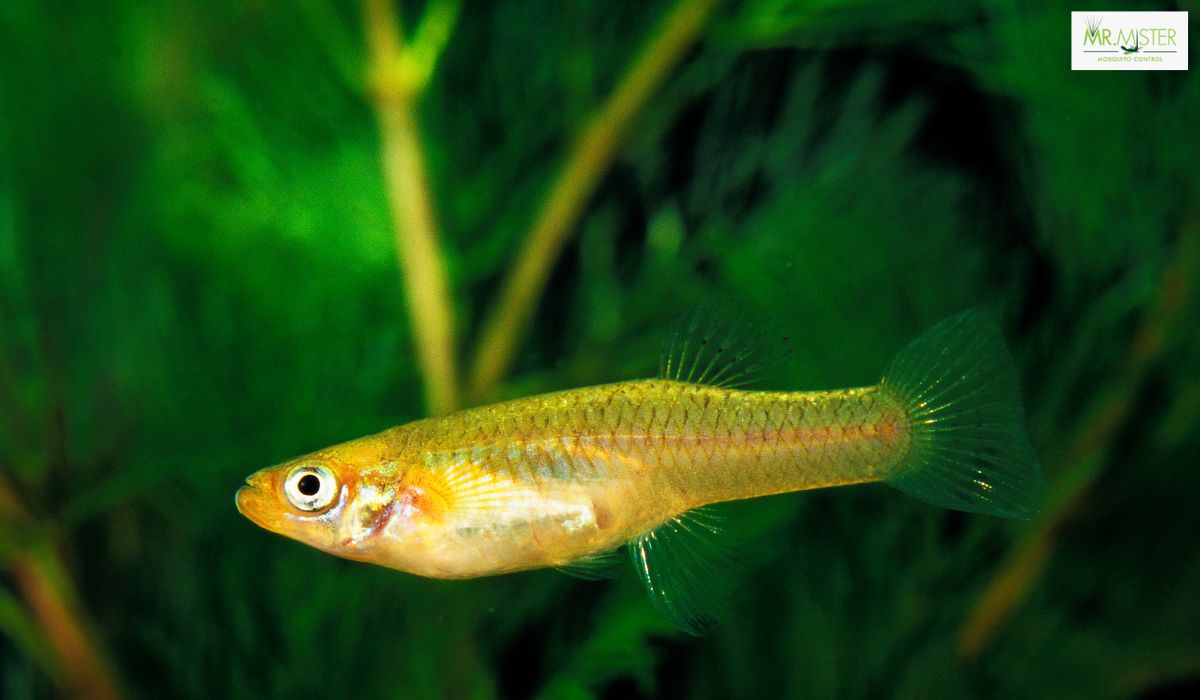Effective Mosquito Control Strategies for Baseball Fields: Keep the Game Buzz-Free!
A baseball field is one of the best examples of a community hub where playing, coaching, and spectating bring people together for mutual enjoyment and camaraderie.
However, mosquito-laden outdoor environments are proven breeding sites for significant health risks and discomfort.
With the possibility of transmission in the case of West Nile virus or Zika virus, mosquito control on baseball field can be as vital to an enjoyable experience as it can be to safety.
This blog outlines an integrated mosquito control approach for baseball fields, specifically environmental management, biological control, chemical control, and community engagement.
Why Is Mosquito Control Important on Baseball Fields?
Health Risks Associated with Mosquitoes
Mosquitoes are not just pestering; they transmit diseases that could affect public health.
Diseases transmitted by mosquitoes may cause severe health conditions and death.
Some of the most common diseases transmitted through mosquitoes are as follows:
- The Culex mosquito primarily spreads West Nile Virus and could cause severe neurological diseases.
- Zika Virus: The virus mainly spreads through Aedes mosquitoes. If it spreads during pregnancy, then there is a likelihood of it leading to severe congenital disabilities.
- Eastern Equine Encephalitis: EEE is one of the rare but potentially severe inflammations within the brain caused by Culex mosquitoes.
Why Baseball Fields Are Vulnerable
Baseball fields are characterized by open grassy areas, puddles of standing water, and parts that may be shaded out, all of which give the perfect conditions for the multiplication of mosquitoes.
Standing water can occur in several locations, among them:
- Dugouts: Areas with collected rainwater.
- Drainage areas: If not often maintained, there is a likelihood of accumulated stagnant water.
- Nearby Puddles: Temporary bodies of water occurring after rainfall can also be breeding sites.
Therefore, this section is needed in preventing mosquitoes from biting the players and spectators.
So, this will keep the diseases caused by those diseases at bay and play the game comfortably.
Common Species of Mosquitoes Around the Baseball Field
The most critical task in effective mosquito control is the identification of the most dominant species observed around that specific area.
The dominant species observed around the baseball field include:
- Aedes Mosquitoes: They are aggressive daytime biters and have been linked to disease transmission such as Zika and dengue. Their presence tends to raise the risk factor of bites during the games and more so at times late afternoon.
- Culex Mosquitoes: Feeding by Culex mosquitoes occurs during large parts of the day, at dawn and dusk. They are known to pass on West Nile virus and other illnesses. Their habits thus make them a significant threat during evening games.
It allows field managers to control them with targeted measures based on their behavior and the characteristics of the species in question.
Effective Mosquito Control Methods
Environmental Management
- Eliminate Standing Water
Still water is the most favored breeding ground for mosquitoes.
In practice, control through the elimination of still water sources is as effective a step in controlling breeding.
Here are some practical steps toward eliminating any still water:
- Regular Inspection: Checks of the entire field to identify any standing water around dugouts, drainage areas, and plant growths.
- Maintenance: The water features like fountains and ponds are maintained clean and well-avoided for stagnation.2. Maintain Vegetation
Proper management of vegetation in the fields should also be handled so that there will be a reduction in resting areas for adult mosquitoes.
Some field managers can:
- Keep grass cut shorter and shrubs trimmed to minimize shaded areas where adult mosquitoes prefer resting.
- Plant Selection: Surround the field with plant species that repel mosquitoes, including citronella and marigolds.
Biological Control
- Introduce Mosquito-Eating Fish
Stocking ponds or water features with mosquito-eating fish, such as gambusia (mosquito fish), assists in controlling mosquito larvae populations.
Mosquito-eating fish are natural predators of mosquitoes.
The mosquitoes undergo a cycle where millions will be consumed before the mosquito matures into an adult that can bite.
2. Facilitate Natural Predators
There is also evidence that promoting the presence of natural predators in an environment also proves helpful to the process of mosquito control.
It includes:
- Bird Habitats: Hosting birdhouses or maintaining natural habitats that attract mosquitoes-eating birds.
- Beneficial Insects: The introduction of dragonflies, which feed on both larvae and adults of the mosquito, into an environment that can help maintain even levels of the mosquitoes.
Chemical Control
Note that environmental and biological control methods should be promoted more, but chemical treatment would sometimes be vital.
The following are strategies that will be effective:
- Larviciding
This tactic would focus on standing water bodies in which the elimination of water is impossible.
In this tactic, deploying larvicides will ensure mosquito larvae cannot develop into adults.
The early development phases of the mosquito will target a reduction in the populations by significant margins.
2. Targeted Insecticiding
The targeted insecticide would target the mosquito and other pests that cause the transmission of the disease.
Judgmental use of insecticides and their application only as a last resort is crucial.
When applying insecticides, note the following:
- Target High-Risk Areas: Target high-risk areas where mosquitoes may tend to rest, such as dense vegetation and shaded spots.
- To coincide with the peak periods of mosquito activity for maximum effectiveness.
Mechanical Control
Mosquito Traps
Mosquito traps can be deployed in the field around the field area to reduce the number of adults significantly.
These attract and capture mosquitoes and thereby control their populations without using chemicals.
Integrate Pest Management Approach
An IPM approach ensures a comprehensive strategy that covers various methods and techniques available for effective mosquito control.
The field managers may monitor the control measure’s effectiveness through regular checking on mosquito populations and disease activity.
These include:
- Trapping: Number of species, population levels.
- Surveys: Collection of information on mosquito activity and presence.
Education and Communication
Educating and communicating with players, workers, and the public about mosquito-borne diseases and prevention measures can help the control measures be effective.
The approaches to education can include:
- Seminars and Workshops: Seminar and workshop arrangements on controlling mosquitoes and prevention methods.
- Materials Provided: Printed materials, display pamphlets, and digital media about the risks in mosquitoes and prevention methods.
Association with Pest Control Operators
It can bring mosquito control programs in conjunction with pest control experts.
Experts will thus be able to make specific suggestions and prepare plans to match the requirements of the baseball field.
Preventive Measures for Athletes and Spectators
In addition to field management practices, athletes and spectators should take some precautionary measures to prevent wasting their time on the field from mosquito bites.
There are some very effective ways to avoid this.
- Wearing Protective Attire
Assist them in wearing long sleeves, pants, and socks, particularly in the early mornings and evenings when these mosquitoes are more active.
Also, light-colored clothes deter mosquitoes.
- Insect Repellents
Apply EPA-registered insect repellents containing DEET, picaridin, or lemon eucalyptus oil to exposed skin and clothing to prevent mosquito bites.
- Screens and Barriers
Install mosquito netting or screens on dugouts and spectator areas to create a physical barrier against mosquitoes.
Maintain the screens in good condition such that no gaps are left open for mosquitoes.
Environmental Management Strategy
Irrigation and Vegetation Control
Improve drainage
Proper grading and drainage system maintenance will significantly help in preventing water from collecting on and around the field.
The most straightforward among these practices are:
- Maintenance: Ditches and culverts must regularly be cleaned and maintained to prevent clogging.
- Grading: The gradient of a field must be correctly designed for the free flow of water while preventing pooling.
Vegetation Management
Maintain grass cut and shrubs around the perimeter trimmed to reduce mosquito breeding sites.
Prevent the creation of shaded areas that support larval development.
Irrigation Practices
Smart Irrigation
Modify irrigation timing: ponding and runoff can provide temporary breeding sites for mosquitoes.
Among the practices, there are:
- Drip Irrigation: Drip irrigation installation will involve using drip irrigation systems that allow water to reach the roots of plants and not puddles.
- Irrigation Timing: Schedule irrigation early in the morning or late in the evening when water does not likely accumulate in the afternoon, minimizing its presence at the peak mosquito activity time.
Community Engagement and Education
Awareness Advocacy
A good mosquito control program must engage the community.
Proactive measures can be achieved through the promotion of awareness among stakeholders.
Some of the strategies include:
- Community Outreach: Educate the community, residents, players, and coaches about mosquito-borne diseases and the best prevention practices.
This would get the public to work together to eradicate mosquitoes.
- Signage and Information: Distribute information materials on the signs around the baseball field, reminding visitors to use some repellent, wear appropriate clothing, or avoid areas with standing water.
In this way, clear messages help reinforce best practices in preventing mosquito bites.
Regular inspections will be necessary to assess the number of mosquitoes, breeding sites, and the performance of control measures implementation.
Establish a routine inspection schedule that includes the following:
- Documentation: Detailed or on-site records of mosquito activity, breeding sites, and what is done to control them.
- Adjustments: Align with appropriate change based on surveillance data and community feedback mechanisms.
After some time, encouraging reactions from the players, trainers, and spectators sitting to watch the game can aptly be improvised into a more working plan on how to control mosquitoes.
This can be through questionnaires or informal debates to acquire insight and adjust procedures.
Conclusion
This way, mosquito control is important for the comfort of players and spectators at baseball fields; but above all this, it is a critical public health practice that prevents several diseases caused by mosquitoes.
Significant mosquito population diminishment and alleviation of risks from biting could thus be achieved by adopting a mix of environmental management practices, biological controls, targeted applications of insecticides, and community engagement.
Promoting awareness of mosquito-borne diseases and encouraging preventive measures through repellents, protective clothing, and elimination of standing water also enhances the effectiveness of mosquito control efforts.
Continued surveillance, compelling adaptation of control strategies, and the implementation of these based on data from the surveillance and community feedback are also significant elements in sustaining long-term success in mosquito management.
For the most professional mosquito control service customized to your organization’s specific needs, call Mr. Mister Mosquito Control.
Their knowledge and proactive management will ensure your field enjoys a safe and enjoyable baseball experience.
FAQ
Why Mosquito Control is Crucial to the Baseball Fields?
Mosquito control for the baseball fields is essential because mosquitoes are carriers of diseases such as West Nile virus, Zika virus, and other diseases targeting ball players and their spectators.
Effective mosquito management ensures a risk-free environment, rules out the possibility of risks in terms of possible disease transmission, and helps have a better game experience.
By minimizing mosquitoes, the field managers ensure a less complicated environment.
What are the most common mosquito species breeding on baseball fields?
Among the common species of mosquitoes seen in a baseball field, Aedes and Culex are the most frequent.
Aedes mosquitoes are primarily daytime blood feeders established as vectors of Zika and dengue viruses.
On the other hand, Culex is night-active or at dusk and dawn active, transmitting the central portion of the West Nile virus.
These identifications can help guide effective control measures in each field.
What are the best management practices for managing mosquitoes in baseball fields?
These include environmental management by eliminating standing water and through proper maintenance of vegetation, biological control by introducing mosquito-eating fish into water bodies, and chemical control through targeted larvicides and insecticides.
Mechanical control also targets the adult population using mosquito traps, among others.
All these practices are to be combined to ascertain effective mosquito management.
What can the players and viewers do to avoid mosquito bites?
Players and spectators can reduce their risk of being bitten by mosquitoes through the wear of protective gear, like wearing long sleeves and pants at dawn and dusk when players are most active.
Clothing treated with an EPA-approved insect repellent containing DEET or other active ingredients applied to exposed skin is another way.
Installing mosquito netting or screens in dugouts and spectators’ sitting areas also works as a barrier between these pests and the crowd.
How is community involvement critical to mosquito control?
Community involvement is very important for mosquito control because it raises public awareness about diseases transmitted by mosquitoes and proper prevention.
An educational workshop, leaflets, and signposts around the baseball field would be a necessary reminder for stakeholders about what mosquitoes have to do with danger.
It can create an opportunity for a proactive effort to keep mosquito populations at bay.
What is the role of drainage and vegetation management in mosquito control?
It prevents mosquito breeding habitats through proper drainage and vegetation management.
The grading and maintenance of a drainage system ensure no water collection within or close to the field, thus lessening the chances that the larvae will develop.
Mowing grass and trimming surrounding bushes reduces resting areas for adult mosquitoes; hence, the field is less welcoming for mosquitoes.
Maintenance is the upkeep of these control efforts
* Schedule a Free Mosquito Control Consultation – 404-941-0720 *
* Guaranteed Results * 100% Biodegradable * Locally Owned






